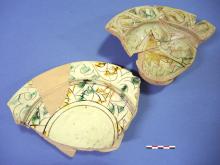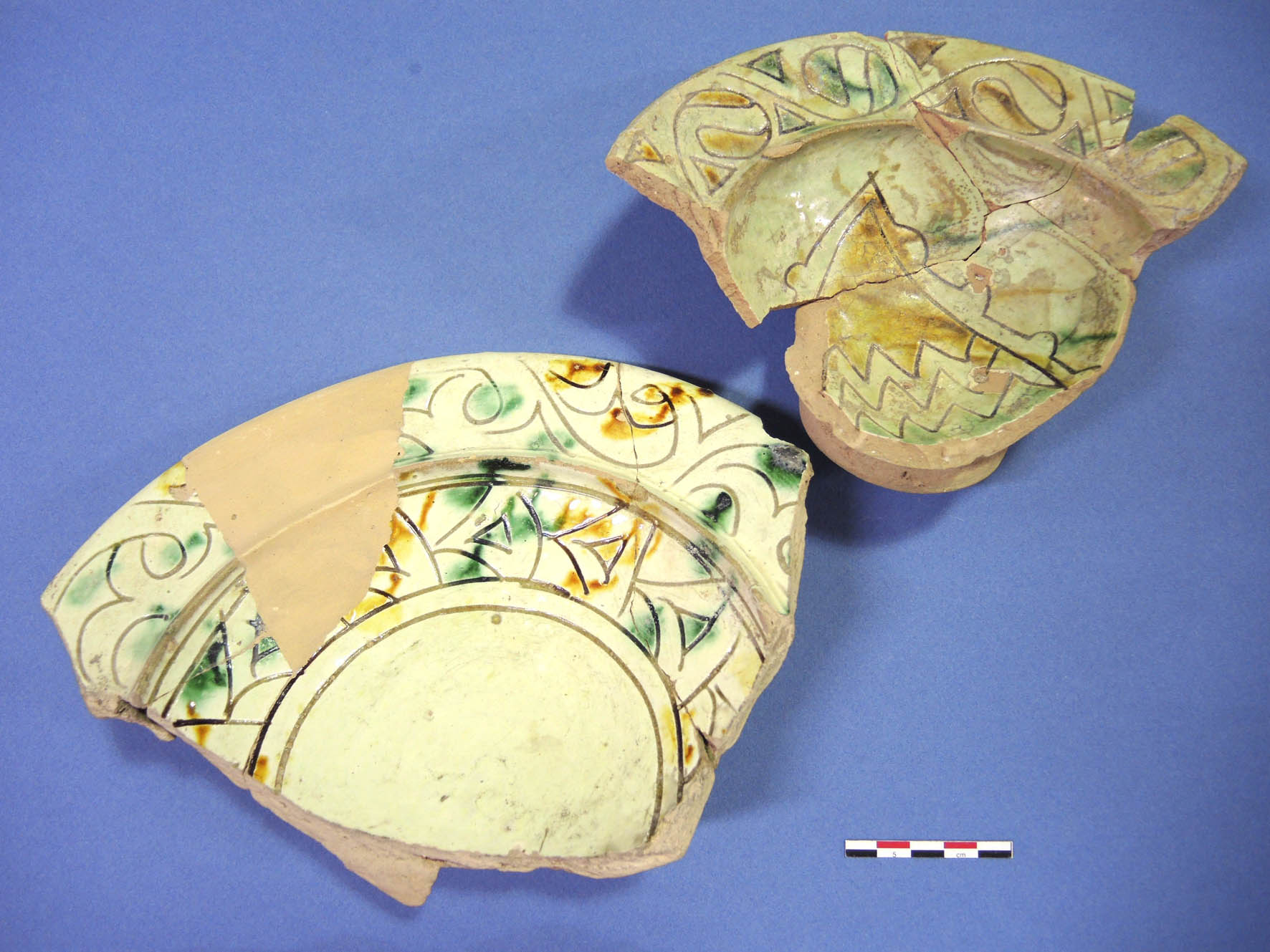
In March 2014, members of the POMEDOR team went to the IAA (Israel Antiquities Authority) storerooms in 'Akko, Bet Shemesh and Jerusalem as well as to Tel Aviv University to sample cooking wares, table wares, amphorae as well as pots that served for sugar production for various archaeometric analyses: chemical analysis, petrography, and residue analysis.
The campaign aimed at answering various research questions regarding these wares:
• Port St. Symeon wares: How much Islamic technology is involved (Capelli et al. 2006) and how many workshops can be define in the consumption sites?
• Levantine Glazed Cooking Wares of the Fatimid and the Crusader periods: 1) can we identify at the Levantine consumption sites one or several competing workshops manufacturing similar wares to those produced in Beirut (Waksman 2002) ? 2) were similar 13th century Levantine cooking vessels used in the same way in the Levant and in Cyprus, where they were imported?
• Levantine Red Fabric Glazed Table Wares of the Fatimid and the Crusader periods: In addition to seeking further insights into the transition of pottery production between the Fatimid and Crusader period red fabric glazed wares, the sampling aimed at a better understanding of productions sites, and whether there was more than one for the types considered (Serçe Limanı, Slip painted and Reserved slip), through comparisons with previous analyses (Waksman et al. 2008, Waksman 2002, 2011, Shapiro 2012).
• "Acre Ware": Wasters found in 'Akko allowed previously to define 'Akko's production in the Crusader period both chemically and petrographically (Waksman et al. 2008, Shapiro 2012). Among the various unglazed wares produced in 'Akko, the "Acre Bowls" are an outstanding example as they were found in large quantities and concentrations in sites linked to the Hospitaller Order, probably to feed the brothers, sick and pilgrims (Stern 2008). Similar wares were found both in the hinterland of 'Akko and in more distant sites such as Jaffa and Apollonia. The latter were found in a Hospitaller castle. We seek to define whether the wares in all the consumptions sites were produced in 'Akko, or in other production sites, and if the different establishments of the Hospitaller order were producing each their own bowls used basically for the same function.
• Sugar production ceramic vessels: another aspect connected to food that was investigated was sugar production, as in the medieval period ceramic vessels were required in the sugar refining process. We sampled sugar pots and molasses jars from three sites. Kabri had the earliest, Fatimid phase, but also yielded another Crusader 12th century sugar production context. Samples were
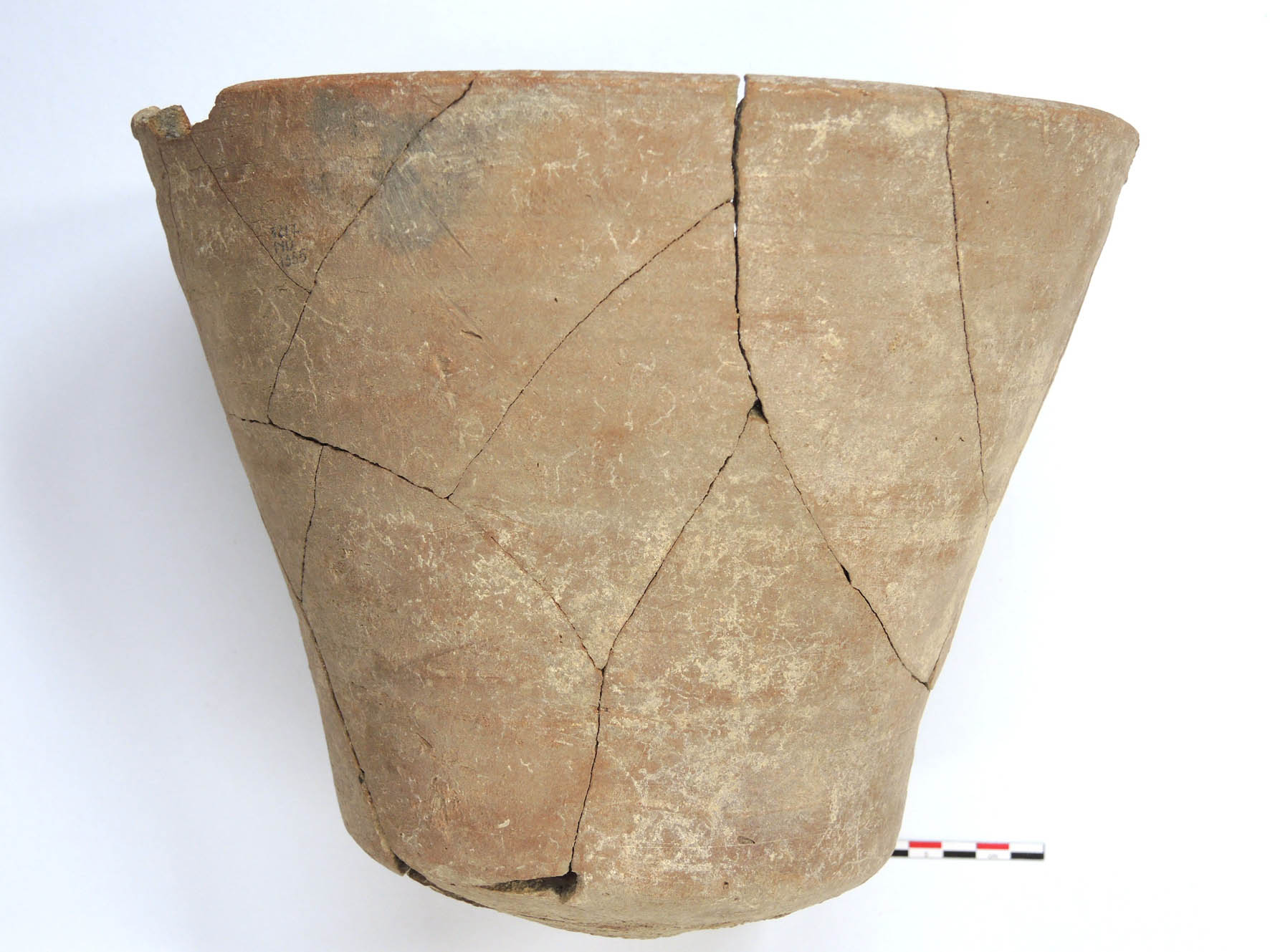
also taken from H. Manot and 'Akko (Crusader 13th century), the first being a sugar production site, and the second from a hall in the Hospitaller compound which stored these vessels. Previous study on Crusader and Mamluk sugar ceramics has shown that the production of the sugar vessels was apparently closely linked to the main power of the time, as the sugar pots of the Crusader period were produced (and stored) at 'Akko the Crusader Kingdom capital and the coastal area, and those from the Mamluk period were made of a different fabric linked to mountain area, closer to Safat, the regional capital of that period. In addition, a few fragments of sugar pots were found in the Safad castle. Therefore we hope that the analytical results will give additional insights into sugar production.
• Material from early Islamic pottery workshops in Acre and Tiberias was sampled to answer some issues regarding the technical traditions in pottery production in the Levant and to examine whether there is continuity in the technological traditions and how the production of the Crusader period relates to the previous one in terms of selection and treatment of raw materials. 1) The calcareous buff colored wares were investigated with material from workshops that were attested by archeological finds in 'Akko (Stern 1998), Tiberias (Stern 1995) and Beirut (François et al. 2003, Waksman 2014). The former two are dated to the 10-11th century, while the latter is dated in Israeli excavated contexts to the late 11th and early 12th century. Samples of the latter were taken from Apollonia and Horbat 'Uza, consumption sites, to define whether they were produced in Beirut, or in Egypt, as they were previous attributed to. 2) The wares that were produced in 'Akko during the Crusader period were investigated with comparison to the early Islamic workshop, although there is a difference of category (glazed bowls in the early Islamic period and common wares in the Crusader period).
Research focused on eight sites, some of which contained archeological remains from both the Fatimid and the Crusader periods:
The early Islamic sites included two pottery production sites:
• 'Akko, remains of a pottery workshop were exposed during an IAA salvage excavation, conducted by E.J. Stern (Stern 1998). These remains included only the debris of the workshop: clay tripod stilts and fragments of what appear to be wasters of glazed bowls. The date was established according to the form of the bowls to the tenth century (Abbasid period), but may continue into the early eleventh century (Fatimid period).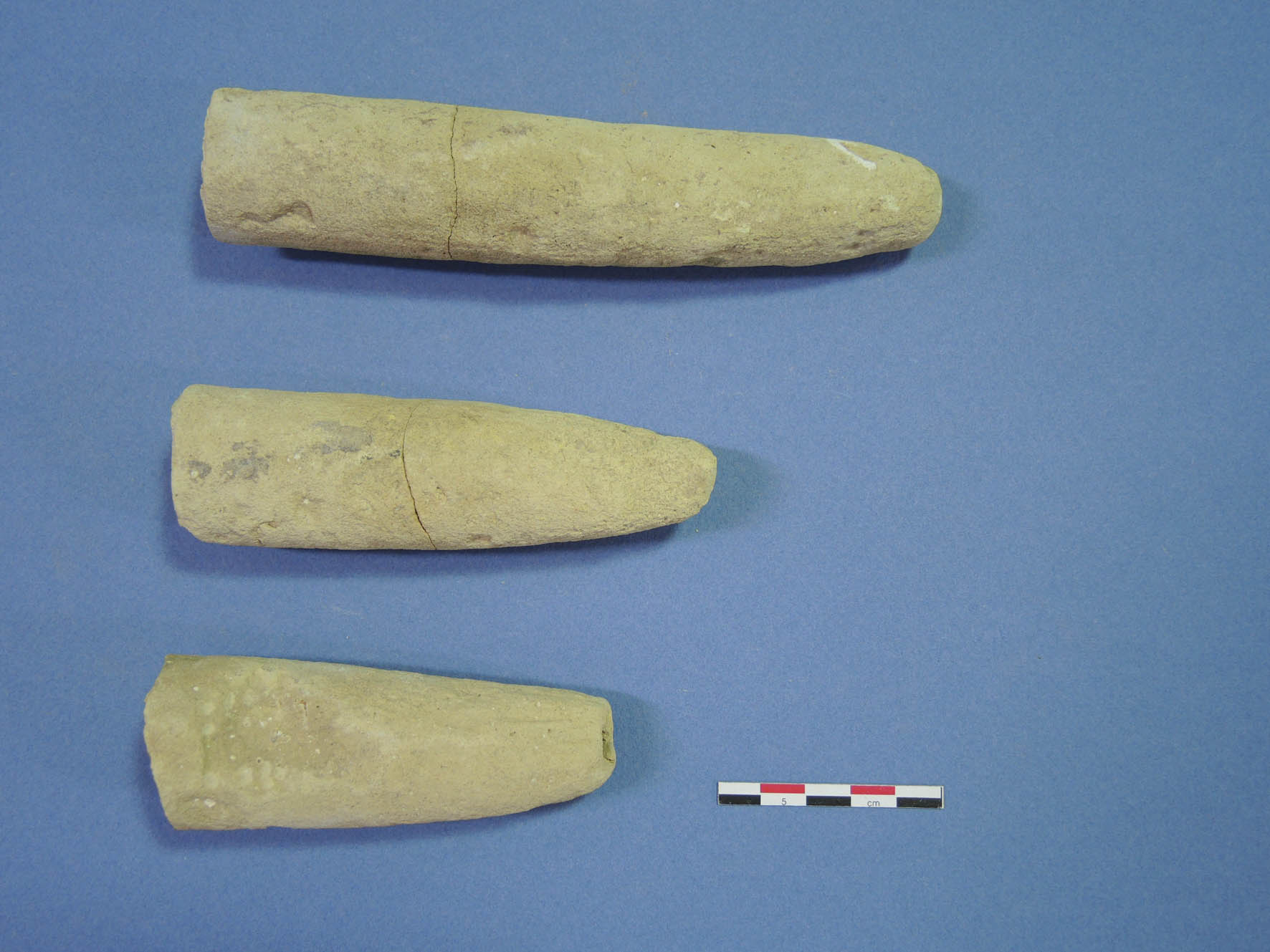
• Tiberias, remains of a pottery kiln were found in an excavation of a sewer trench by an IAA inspector and was published by E.J. Stern (Stern 1995). It seems that the kiln collapsed shortly after firing as fully fired vessels, biscuit fired bowls and storage jars were found there, as well as kiln bars that were used as spacers. The kiln was dated to the tenth-eleventh centuries (Abbasid and Fatimid periods), according to the form of the vessels. It should be noted that remains of pottery production was found in more excavations in the vicinity of this kiln, and it appears that there was a big pottery production, perhaps one big, or a cluster of a few smaller workshops operating in this area, which is at the edge of the early Islamic city.
The Fatimid and Early Crusader period, which covers the second half of the 11th and early 12th century included one sugar production site and two domestic assemblages:
• Remains of what appeared to be a semi-domestic sugar production dated to the eleventh century were unearthed in an IAA salvage at el-Kabri conducted by H. Smithline (Smithline 2004). A stone and brick-built oven functioned as a cooking stove, yet more significantly, was probably an installation for sugar production in the 11th century, attested to by the sugar pots and molasses jars found in close proximity. This is probably the earliest evidence for sugar production in Israel yet uncovered. Other prominent finds were fragments of cooking ware and glazed bowls of the 11th century.
• Apollonia, in an excavation conducted by the Tel Aviv University, headed by Oren Tal, pottery from the southern part of the town (Area E), which was a residential area abutting the town’s southern fortification wall (Ayalon, Tal and Yehuda 2013). The pottery found there, studied by Lisa Yehuda, seems to reflect settlement that continued (maybe with the same population) from the 11th to the 12th century, with no clear distinction (Lisa Yehuda, personal communication).
• Horbat 'Uza, a rural settlement in the fertile plain of 'Akko was excavated by IAA, headed by Nimrod Getzov. The occupation phase, of the early twelfth century was sampled. It seems that it represents the early Frankish settlement on the site (Getzov et al. 2009).
The 13th century sites include urban Frankish sites, as well as rural sites with either Frankish or local inhabitants:
• Acre ('Akko), the main port of the Latin Kingdom of Jerusalem, and its capital during the 13th century. Large scale excavations by the IAA in the Hospitaller compound (Eliezer Stern) and in residential areas ('Knight hotel'; Danny Syon) unearthed ceramic assemblages typical both to the Hospitaller order and to a domestic setting (Stern 2012).
• Horbat 'Uza, where the second phase of the Crusader period was sampled. This phase dated to the late 12th and 13th century, saw the building of a manor house, apparently of a Frankish knight with close connections to Acre (Getzov et al. 2009).
• Horbat Bet Zeneta, a rural site of local inhabitants dated to the thirteenth century was a salvage excavation conducted by N. Getzov on behalf of the IAA (Getzov 2000).
• Horbat Manot, a rural sugar production site, that was in the hand of the Hospitallers in the 13th century was excavated by Edna Stern on behalf of the IAA (Stern 2001).
• Tiberias, a town on the shores of the lake of Galilee, where a domestic building with an occupation phase of the 13th century was excavated during an IAA salvage excavation conducted by Edna Stern (Stern 2013).
• Apollonia, where a Hospitaller castle was built in the 13th century, shortly after the site was captured by the Muslims in 1265. Ceramics were deposed in a pit, apparently during the last days before its final capture and destruction (Tal and Roll 2011), represent the vessels that were used there by the Hospitallers.
• Jaffa (Yafo) was the main port for Jerusalem and one of the Frankish cities in the Latin Kingdom. A domestic quarter that was excavated of behalf of the IAA by Y. Arbel unearthed ceramics dating to the 13th century (Arbel 2009; Strange-Burke and Stern forthcoming). In addition, in another IAA salvage excavation also conducted by Arbel located apparently outside of the city walls, some fragments of what may be wasters of reserved slip glazed bowls were found (Stern forthcoming).
From these excavations, 198 samples were chosen for chemical analysis, of them, 110 will also be analyzed by petrography.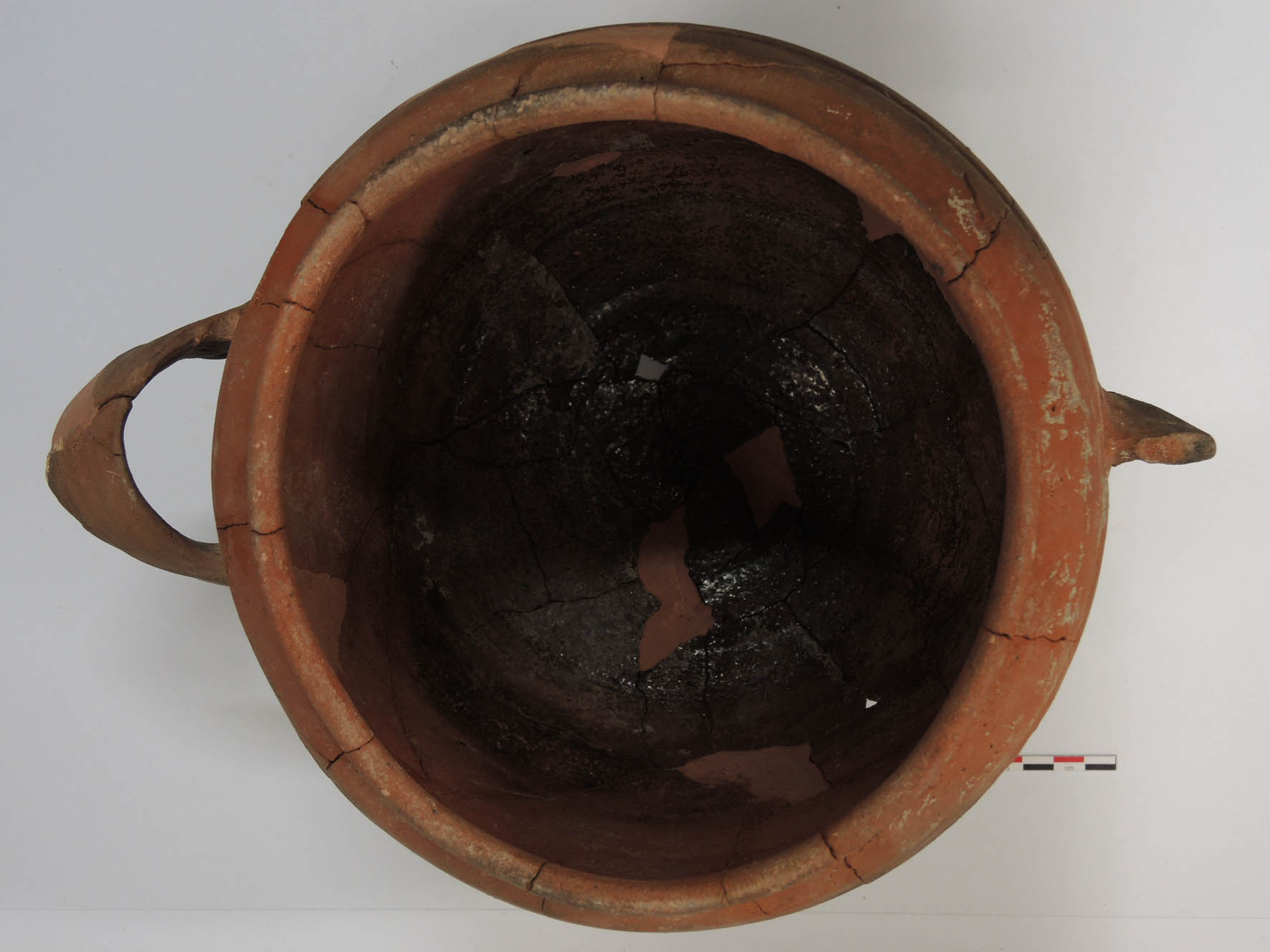
Of these 7 were kiln bars and biscuit-firing glazed bowls and jars from a kiln in Tiberias; 10 are glazed bowls from a kiln debris in 'Akko (both dated to the early Islamic period); 3 are possible wasters of reserved slip glazed bowls from Jaffa (dated to the Crusader period).
18 samples were taken for residue analysis. These included 14 cooking vessels and 4 amphorae.
E.J. Stern
Photos (© S.Y. Waksman):
Port Saint-Symeon Ware, Acre
Sugar mould, el Kabri
Kiln bars, Tiberias
Levantine Cooking Pot, el Kabri
References
Arbel Y. 2009. Yafo, the Qishle. Hadashot Arkheologiyot – Excavtions and Surveys in Israel 121 (22 February). http://www.hadashot-esi.org.il/report_detail_eng.aspx?id=1051&mag_id=115 (accessed 24 March 2014).
Ayalon E., Tal O and Yehuda E. 2013. A Twelfth-Century Oil Press Complex at the Crusader Town of Arsur (Apollonia-Arsuf) and the Olive Oil Industry in the Latin Kingdom of Jerusalem. Journal of Eastern Mediterranean Archaeology and Heritage Studies vol. 1, no. 4: 259–291.
Capelli C., Cabella R., Riccardi M. P., Waksman Y. 2005. Caratterizzazione attraverso microscopia ottica, SEM/EDS e XRF di ceramiche graffite policrome mediorientali di XII-XIII secolo (Port Saint Symeon Ware) con ingobbio "quarzoso" rinvenute a Beirut, Genova et Marsiglia. In Atti del III Congresso Nazionale di Archeometria. Bologna. Pp. 193-201.
François V., Nicolaïdès A., Vallauri L., Waksman Y. 2003. Premiers éléments pour une caractérisation des productions de Beyrouth entre domination franque et mamelouke. In Actes du VIIe Congrès International sur la Céramique Médiévale en Méditerranée, Thessalonique, 11-16 octobre 1999. Athens. Pp. 325-340.
Getzov N. 2000. An Excavation at Horbat Bet Zeneta. ‘Atiqot 39:75*–106* (Hebrew; English summary, pp. 202–204).
Getzov N., Avshalom-Gorni D., Gorin–Rosen Y., Stern E.J., Syon D. and Tatcher A. 2009. Horbat ‘Uza. The 1991 Excavations. Volume II: The Late Periods (IAA Reports 42). Jerusalem. Pp.118–175.
Shapiro A. 2012. In E.J. Stern, ‘Akko I. The 1991–1998 Excavations. The Crusader-Period Pottery (IAA Reports 51). 2 vols. Jerusalem.
Smithline H. 2004. El-Kabri. Hadashot Arkheologiyot – Excavtions and Surveys in Israel 116 (4 May). http://www.hadashot-esi.org.il/report_detail_eng.asp?id=3&mag_id=108 (accessed 24 March 2014).
Stern E.J. 1995. An Early Islamic Kiln in Tiberias. ‘Atiqot 26:57–59.
Stern E.J. 1998. Evidence of Early Islamic Pottery Production in Acre. ‘Atiqot 35:23–25.
Stern E.J. 2001. The Excavations at Lower Horbat Manot: A Medieval Sugar-Production Site. ‘Atiqot 42:277–308.
Stern E.J. 2008. The Hospitaller Order in Acre and Manueth: the Ceramic Evidence. In V. Mallia-Milanes ed. The Military Orders. 3. History and Heritage. Aldershot. Pp. 203–211.
Stern E.J. 2012. ‘Akko I. The 1991–1998 Excavations. The Crusader-Period Pottery (IAA Reports 51). 2 vols. Jerusalem.
Stern E.J. 2013. Crusader, Ayyubid and Mamluk-Period Remains from Tiberias. ‘Atiqot 76:183–208.
Stern E.J. Forthcoming. Crusader Pottery from the Excavations of MeRaguza Street, Yafo.
Strange Burke K. and Stern E.J. Forthcoming. Crusader Pottery from the Yafo Kishle Excavations. In: The History and Archaeology of Jaffa. IAA Reports.
Tal, O and I. Roll. 2011. Arsur: The Site, Settlement and Crusader Castle, and the Material Manifestation of Their Destruction. In O. Tal ed. The Last Supper at Apollonia: The Final Days of the Crusader Castle in Herzliya. Tel Aviv. Pp. 8–51.
Waksman S.Y. 2002. Céramiques levantines de l'époque des Croisades: le cas des productions à pâte rouge des ateliers de Beyrouth. Revue d'Archéométrie 26: 67–77.
Waksman S.Y., Stern E.J., Segal, I., Porat N. and Yellin J. 2008. Some Local and Imported Ceramics from Crusader Acre Investigated by Elemental and Petrographical Analysis. 'Atiqot 59: 157–190.
Waksman S.Y. 2011. Ceramics of the 'Serçe Limanı type' and Fatimid pottery production in Beirut. Levant 43.2: 201–212.
Waksman S.Y. 2014. Etudes de provenance de céramiques. In P. Dillmann and L. Bellot-Gurlet (dir.), Circulation des matériaux et des objets dans les sociétés anciennes. Pp. 195-216.



